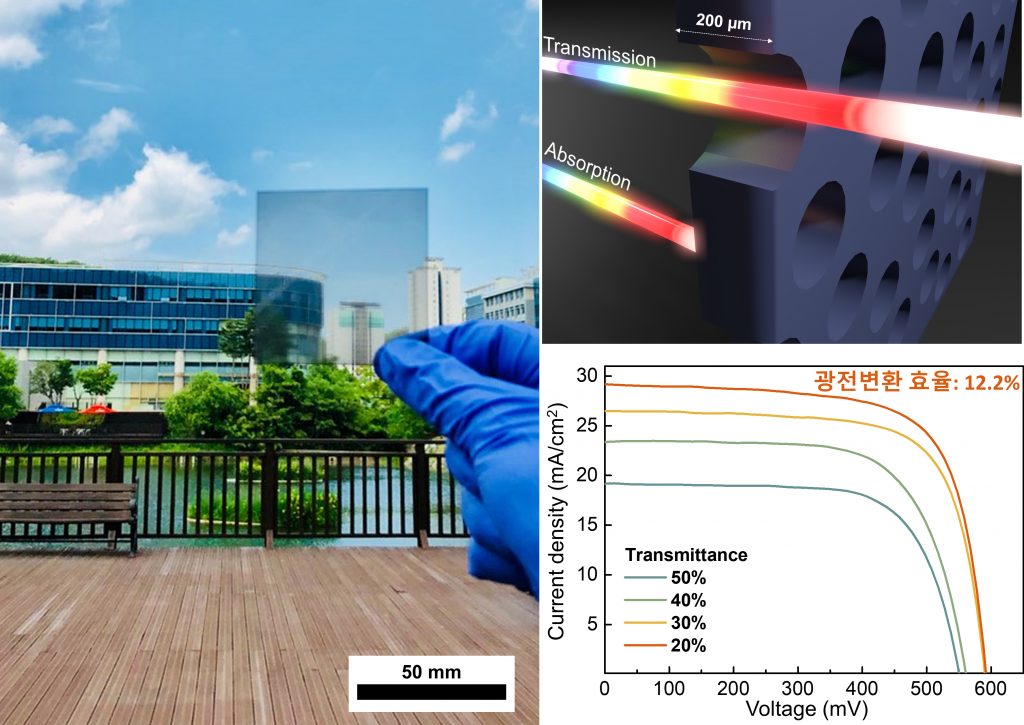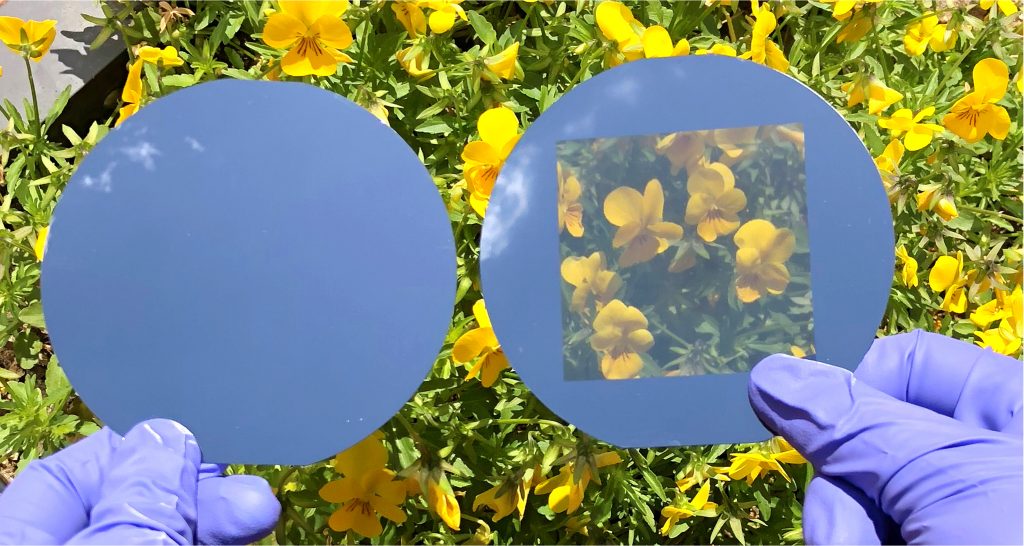Researchers are rushing to introduce transparent photovoltaic technologies. It won’t be too long before building windows or car sunroofs are being served as a battery element.
A research team, led by Professor Kwanyong Seo in the School of Energy and Chemical Engineering at UNIST has succeeded for the first time in making the crystalline silicon solar cell transparent with dark and muddy colors. It is a groundbreaking result of applying a new concept microstructure that cannot be recognized by the human eye.
Crystalline silicon solar cells produce electricity using “silicon with a regular atomic arrangement” as a “photoactive layer.” The photoactive layer converts solar energy into electrical energy (photoelectric conversion). In the case of crystalline silicon, photoelectric conversion efficiency is high and stability is also provided. Thanks to this, more than 90% of the solar cell market now occupies crystalline silicon solar cells. However, silicon solar cells are difficult to make transparent because they mainly absorb the sunlight in the visible range and produce electrical energy. In order to become a transparent solar cell, all visible light must be transmitted.

The research team introduced the “microstructure” on silicon to make transparent silicon solar cells. They punched tiny holes, invisible to the human eyes, in opaque solar cells and turn them transparent. This microstructure consists of structures that our eyes do not recognize and transmits sunlight. Therefore, visible light is transmitted through the microstructured part, and sunlight, including visible light, is absorbed in the silicon region that is not.
“This exhibits the same stability as the existing crystalline silicon technology. For this reason, I think that the feasibility of successful commercialization is huge,” says KangMin Lee (School of Energy and Chemical Engineering, UNIST), the first author of the research.
Researchers have created solar cells that are as transparent as glass with the efficiency levels of 12.2%. This was the highest colorless and transparent solar cell ever developed. The light transmittance can be adjusted in various ways, so that it can be applied to various fields from building windows to automobile sunroofs.
“Our findings solve two main issues with the existing transparent solar cells, including lower levels of flexibility and transparency,” says Namwoo Kim (School of Energy and Chemical Engineering, UNIST), the first co-author of the research.

The age of revolutionary new solar window is down the pike. This, we will soon witness the mass integration of solar cells into everyday infrastructure (i.e., Energy-generating vehicles and buildings made out of glass as large-scale solar batteries).
The findings of this research have been published in Joule, a sister journal to Cell on December 12, 2019. This research has been supported by the New Renewable Energy Core Technology Development Project of the Korea Institute of Energy Technology Evaluation and Planning (KETEP) from the Ministry of Trade, Industry and Energy.
Journal Reference
Kangmin Lee, Namwoo Kim, Kwangjin Kim, et al., “Neutral-Colored Transparent Crystalline Silicon Photovoltaics,” Joule, (2019).












